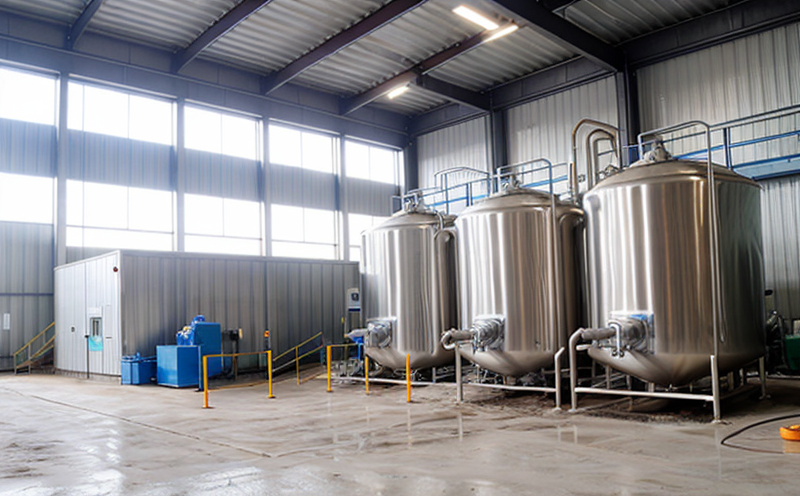ASTM D1976 Zinc Test in Industrial Water
The ASTM D1976 method is a critical standard used to determine the concentration of zinc in water. This test is particularly important for industries that handle industrial process waters, as it helps ensure compliance with environmental regulations and supports quality control processes. In this section, we will delve into the details of the ASTM D1976 test, its importance, and how it impacts various stakeholders within the industry.
The zinc content in industrial water can influence numerous aspects including corrosion rates, chemical reactions, and overall process efficiency. Accurate measurement is essential to maintain optimal operating conditions and prevent potential issues that could lead to costly downtime or environmental harm. By adhering to ASTM D1976, facilities can ensure they are meeting the highest standards of quality and safety.
The test involves a series of steps designed to accurately quantify zinc levels in water samples. These include sampling, preparation, digestion, and spectrophotometric analysis. The precision and accuracy of these methods contribute significantly to the reliability of the results. Understanding these steps is crucial for anyone involved in industrial process water management.
The importance of this test cannot be overstated, especially in industries such as metal plating, mining, and chemical production where zinc plays a pivotal role. Compliance with ASTM D1976 ensures that all processes are conducted safely and effectively, minimizing risks associated with excessive zinc levels in wastewater discharge.
For quality managers and compliance officers, ensuring proper implementation of ASTM D1976 is essential for maintaining regulatory compliance. R&D engineers benefit from accurate data to refine their processes and improve product quality. Procurement teams can leverage these insights to select suppliers who adhere to stringent testing protocols.
Why It Matters
The ASTM D1976 zinc test is crucial for several reasons, particularly in the context of industrial process water management:
- To ensure compliance with environmental regulations and standards.
- To maintain optimal operating conditions within production facilities.
- To minimize risks associated with excessive zinc levels in wastewater discharge.
- To support quality control processes and enhance overall product reliability.
By adhering to this standard, industries can demonstrate their commitment to environmental sustainability and operational excellence. This not only protects the environment but also enhances the reputation of the company among stakeholders.
The test results provide actionable insights that help in making informed decisions about water treatment processes, equipment maintenance, and raw material selection. These insights contribute to long-term cost savings and improved productivity by preventing costly mistakes and ensuring consistent quality output.
Applied Standards
| Standard Name | Description |
|---|---|
| ASTM D1976-23 | This standard specifies the procedures for the determination of zinc in water by atomic absorption spectrophotometry. |
| ISO 14825:2013 | An international standard that provides recommendations on the quality of laboratory water used for scientific and technical purposes. |
The application of ASTM D1976 ensures consistency and reliability in zinc testing across different laboratories, which is vital for accurate results. Compliance with this standard also helps facilities meet broader regulatory requirements related to water quality and environmental protection.
ISO 14825 complements the ASTM D1976 by providing guidelines on the quality of laboratory water used during analysis. Together, these standards contribute to the overall accuracy and precision of zinc testing in industrial process waters.
Competitive Advantage and Market Impact
- Enhanced reputation for environmental stewardship.
- Improved operational efficiency through accurate water management.
- Increased customer trust due to adherence to international standards.
- Proactive approach to regulatory compliance, reducing risks of penalties.
By implementing ASTM D1976 zinc testing in industrial process waters, companies can achieve a competitive edge by demonstrating their commitment to sustainability and quality. This proactive approach not only enhances the company's image but also positions it as a leader in its industry.
The accurate measurement of zinc levels ensures that water treatment processes are optimized, leading to reduced waste generation and lower operational costs. These benefits translate into improved market position and enhanced customer satisfaction, ultimately driving business growth.





